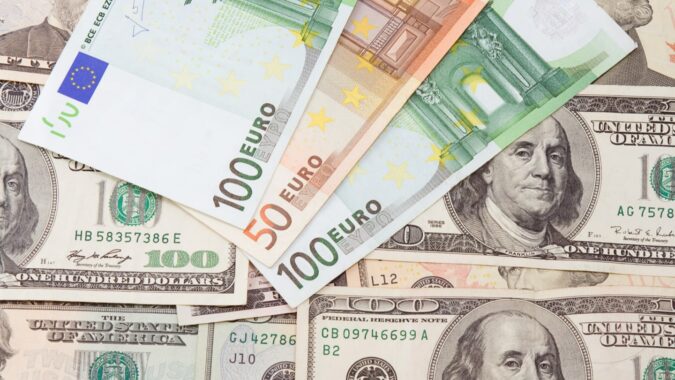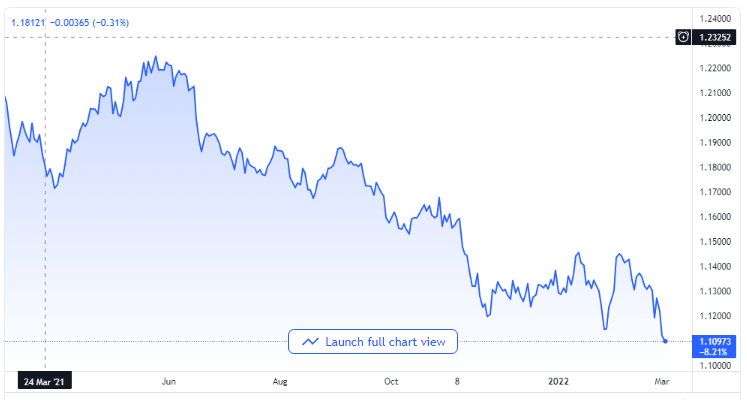
The Euro suffered a sharp drop on Wednesday to hit its lowest point since May 2020 while investors express their deep concerns over the effect of the escalating war between Russia and Ukraine on Europe’s economic fortune. While at that, the demand for the US dollar increased rapidly as traders sought safe-haven measures.
EUR/USD price chart. Source TradingView
The regional currency fell by 0.5% at the time of writing this report to $1.1069.
More is Anticipated from the ECB
Further additions to the Euro’s problems was the pullback in speculations on the European Central Bank’s interest rate increase. The bond yields of the German government also fell on Tuesday.
A senior economist with the Japanese Mizuho Bank, Colin Asher, has said that there is going to be a negative impact on trade relations, energy supply, and the economy where the Euro is concerned because it is at the forefront and epicenter.
The US dollar recorded more gains as the dollar index increased by 0.4% to remain steady at 97.755.
The Swiss franc as a safe haven performed higher with the Euro down against it by 0.4% at $1.0186, amounting to a seven-year low.
A Push for Conquest
Russian troops are reported to be attempting to surround and subdue cities in Ukraine with the intensified bombing on Wednesday, just seven days after the start of the invasion that has attracted a lot of sanctions on Russia from different Western countries that oppose the war. This has caused many multinational companies to cut ties, stop sales, and drop investments worth tens of billions in dollars.
The Russian ruble has come under intense pressure as it hits 108 rubles to the US dollar after it has been down as low as 120 early in the week.
Other currencies such as the Australian dollar that are linked with commodities kept a hold on their own while increasing prices in gas, oil, coal, and grain are providing support.
A strategist at Rabobank, Jane Foley, mentioned that the combined strength of commodity prices and Australia’s highly improved present account posture indicates that there is probably a good reason for the AUD/USD pair to make a break with its stereotypical international role as a high-risk currency in the G10. She also expects the pair to have climbed up to $0.74 in value by the end of the year.
On the flip side, higher energy prices have aided gains for the Japanese Yen as a safe haven commodity in spite of the Eastern European crisis, as most of Japan’s energy is being imported. The Japanese Yen dropped back to 115.24 to the US dollar on Wednesday.













